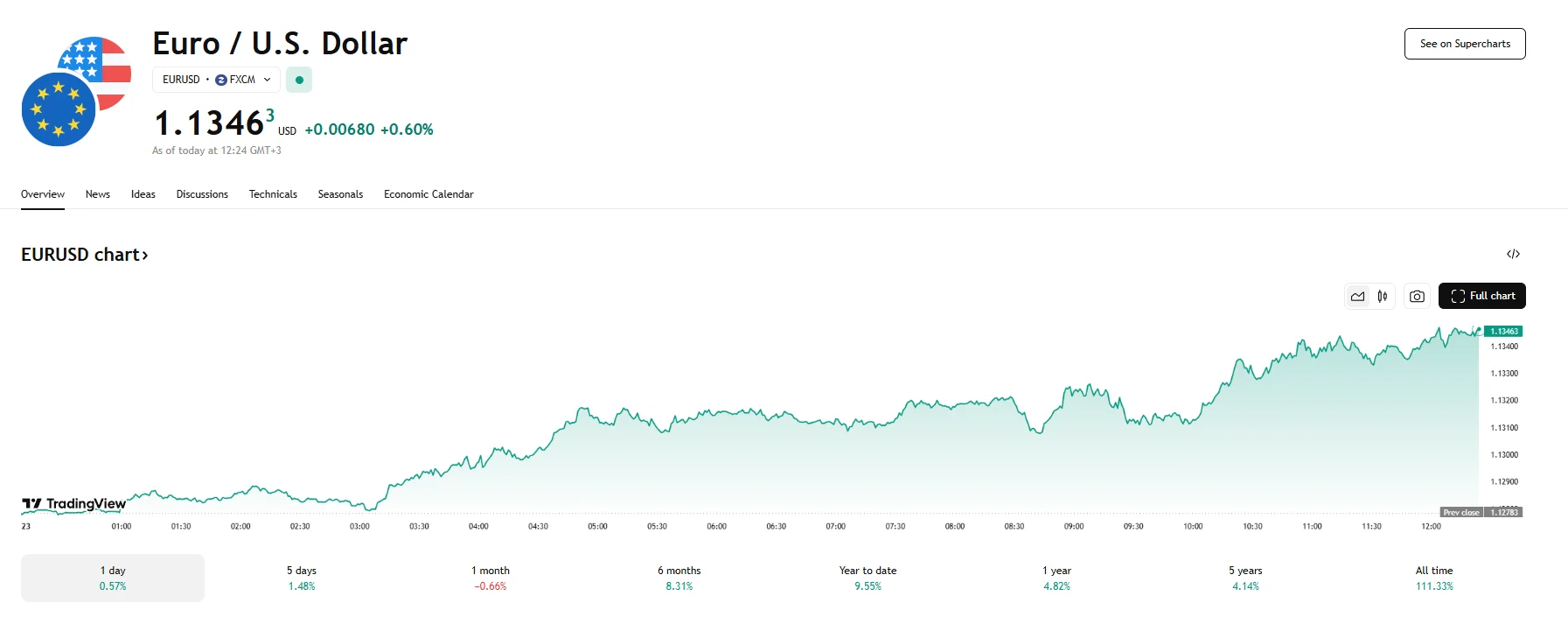EUR/USD Climbs Past 2-Week High to 1.1346, Germany’s Q1 GDP Growth Rises to 0.4% EUR/USD Climbs Past 2-Week High to 1.1346, Germany’s Q1 GDP Growth Rises to 0.4%
Key Moments:The EUR/USD pair surged 0.6% and above 1.1340 on Friday, marking the euro’s highest level since early May.Germany’s Q1 GDP growth now stands at 0.4% on strong consumption and investment ac
Key Moments:
- The EUR/USD pair surged 0.6% and above 1.1340 on Friday, marking the euro’s highest level since early May.
- Germany’s Q1 GDP growth now stands at 0.4% on strong consumption and investment activity.
- Markets forecast that the ECB will initiate interest rate cuts in early June.
Euro Strength Supported by Germany’s Surprising Momentum
The euro continued to show resilience on Friday by managing to appreciate 0.6% against the US dollar. The EUR/USD pair’s exchange rate of 1.1346 marked its highest position in around two weeks.

The jump was attributed to new economic data from Germany, according to which Europe’s largest economy achieved a gross domestic product growth of 0.4% over 2025’s first three months, contrasting earlier estimates of 0.2% thanks to robust performance in household spending and a rebound in investment. The data surprised market participants and marked the fastest climb in years. This week also saw Germany’s Ifo Business Climate Index hit 87.5, an improvement from the 86.9 reported last month.
Eurozone Data Mixed, US Fiscal Worries Impact Greenback
While Germany pointed toward unexpected strength, data from other parts of the euro area painted a less optimistic picture. French consumer sentiment deteriorated to 88 this month, its lowest level in around 21 weeks. Moreover, the Eurozone’s broader private sector activity recorded a surprise contraction, as shown by the Services PMI’s lackluster reading of 48.9, down from April’s 50.1.
Against this backdrop, investor attention remains fixed on the ECB’s upcoming decision. Market participants broadly anticipate the central bank will cut interest rates at its June 5th meeting. Additional reductions may also be on the horizon by the end of 2025.
In contrast to the euro, the US dollar faced pressure related to the United States’ expanding debt. Investor sentiment was further unsettled following the approval of US President Donald Trump’s “One Big Beautiful Bill” in the House of Representatives.
Disclaimer: The views in this article are from the original Creator and do not represent the views or position of Hawk Insight. The content of the article is for reference, communication and learning only, and does not constitute investment advice. If it involves copyright issues, please contact us for deletion.